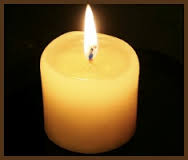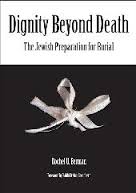Notes From the Lampert Library
 After attending the recent meeting with B’nai Keshet about the local chevra kadisha, the group of men and women who take on the responsibility of preparing a person for burial, I began to think about the Jewish way of death. (Chevra kadisha, by the way, literally means holy society.) Like many of our lifecycle events, death can be closely orchestrated. But within that orchestration there is room for individual or community procedures.
After attending the recent meeting with B’nai Keshet about the local chevra kadisha, the group of men and women who take on the responsibility of preparing a person for burial, I began to think about the Jewish way of death. (Chevra kadisha, by the way, literally means holy society.) Like many of our lifecycle events, death can be closely orchestrated. But within that orchestration there is room for individual or community procedures.
Death is an integral part of the Torah, maybe even more so than birth. We read about and vividly experience the old ages and deaths of our forefathers and to some extent that of our foremothers. We sometimes see peaceful demises, sometimes family conflict, sometimes families coming together to bury a parent. We see violence and treachery, self-sacrifice and greed all around death.
Dealing with a person’s death appears near the beginning of the Torah with the death-murder- of Abel and very near the end when God buries Moses. Preparing a person for burial is said to be the greatest mitzvah one can perform because there is no thanks from the recipient of the mitzvah.
The Torah teaches us that death is on the continuum of life and is inevitable and that death should be treated with dignity and with harmony within the family- Isaac and Ishmael, certainly not the closet of siblings – come together to bury their father Abraham. The Torah also teaches us to remember the dead as Jacob and Joseph are remembered.
 It’s been said that Jews do death right: we bury quickly and then are there to comfort the mourner rather than the other way around as in many traditions. We mark the psycho-logical stages of mourning and allow the mourner to remember rather than insisting that he or she jump right back into life as if death has not made an appearance.
It’s been said that Jews do death right: we bury quickly and then are there to comfort the mourner rather than the other way around as in many traditions. We mark the psycho-logical stages of mourning and allow the mourner to remember rather than insisting that he or she jump right back into life as if death has not made an appearance.
These books for adults and children explain the Jewish approach to dying, death, and mourning:
For young readers:
Abraham, Where is Grandpa Dennis?
Hesse, Poppy’s Chair
Mellonie, Lifetimes: a beautiful way to explain death to children
Portnoy, Where do people go when they die?
Techner, A Candle for Grandpa: a guide to the Jewish funeral for children and parents
Zalben, Pearl’s Marigolds for Grandpa
 For adult readers:
For adult readers:
Kaddish: women’s voices
May God Remember: Yizkor: memory and memorializing in Judaism
Angel, The Orphaned Adult
Berman, Dignity beyond death: the Jewish preparation for burial
Broner, Mornings and Mourning: a kaddish journal
Diamant, Saying Kaddish: how to comfort the dying, bury the dead and mourn as a Jew
Gillman, The Death of Death: resurrection and immortality in Jewish thought
Goldman, Living a Year of Kaddish
Greenberg, A Treasury of Comfort
Isaacs, Every Person’s Guide to Death and Dying in the Jewish Tradition
Lamm, Consolation: the spiritual journey beyond grief
Lamm, The Jewish way in Death and Mourning
Rapoport, A Woman’s Book of Grieving
Wieseltier, Kaddish
- Is It Passover Yet? - Thu, Apr 18, 2024
- MESH Report April 9, 2024 - Thu, Apr 11, 2024
- Guess Who? - Wed, Mar 13, 2024
